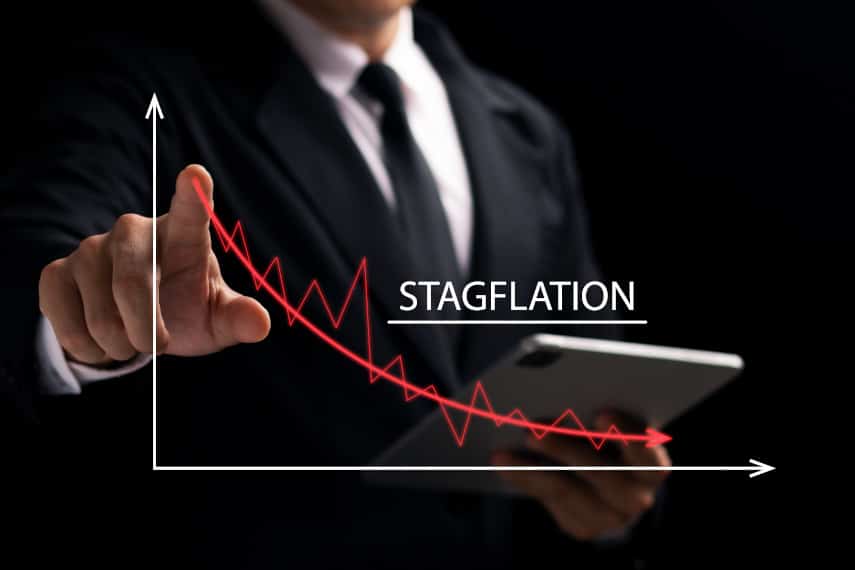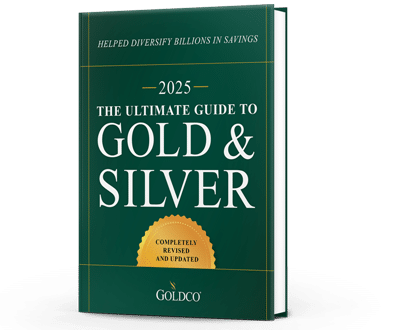Is the US Dollar in Danger of Collapsing?
In the aftermath of President Trump’s tariffs, financial markets have seen a significant amount of volatility and uncertainty But while most Americans have focused on the well-being of their 401(k)...
Economy

Now that summer is coming to an end, kids are back at school, and businesses are gearing up for the end of the year push, things are getting back to normal as far as the economy goes. Or at least things are supposed to be getting back to normal.
The post-summer period is one in which we often figure out which way the economy will progress for the remainder of the year. And this year things aren’t looking too great.
While we aren’t seeing the same kind of meltdown that we did in 2008, the direction of the economy seems to be similarly downward. Talk of recession is growing, and almost no one is optimistic about the future. So what could the fourth quarter hold in store for us?
The 2008 financial crisis was a crisis in slow motion. The recession was announced after the fact to have begun in December 2007, but aside from a few lone voices in the wilderness, most of the American pundit class did its best to try to deny that anything was wrong.
Policymakers in Washington acted in a similar manner, claiming that everything was just fine, that the problems in the housing market wouldn’t spill over into the general economy, etc. As we found out in September 2008, however, that was all a lie.
The fall of 2008 saw things begin to really spiral out of control, with the failure of Lehman Brothers really bringing the crisis to a head. Even the $700 billion bank bailout couldn’t stem the losses on Wall Street, and the crisis continued for another several months.
There are some definite parallels between 2008 and today, although like most historical comparisons nothing happens completely identically.
Possibly the most important parallel is that everything seems to be going wrong at once. Markets are facing double digit losses, GDP has contracted for two consecutive quarters, and inflation remains at 40-year highs. Nearly 4 million Americans are at risk of being evicted, many millions more are falling behind on their bills, and the housing market is on the cusp of implosion as rising interest rates are sinking buyer demand.
Even precious metals like gold and silver have had a lackluster year, something that seems counter-intuitive during a period in which safe haven demand for gold and silver has seen tremendous growth. But that too is following the same pattern as 2008.
It’s easy to look at the gold price and get discouraged, thinking that it’s never going to rise again. But in 2008, gold lost over 30% of its value at one point, coinciding with the slide in markets. When a systemic crisis is facing the country, even safe haven assets aren’t guaranteed to always rise in value.
Thankfully, that drop in the gold price was only a temporary manifestation of overall systemic weakness throughout the economy, which is very likely the reason gold is also struggling today. But during the same period that markets dropped over 50% from October 2007 to March 2009, gold gained over 25%.
If we see the same pattern emerge during the coming recession, you would expect to see the gold price diverge from markets at some point, with gold rising while markets decline. We haven’t reached that inflection point yet.
One of the reasons for that is that there doesn’t seem to be a trigger that sets things off. In 2008 it was the failure of Lehman Brothers, which shocked financial markets. After the Federal Reserve’s rescue of Bear Stearns, everyone expected the Fed to keep bailing out troubled firms. So for the Fed to leave Lehman hanging was a major unexpected shock.
It was also a major warning that, if such a major firm could go under, anyone was at risk. No one on Wall Street was safe, and so markets were thrown into a panic. Big name firms found themselves at risk, with many mergers resulting as financial weakness began to be shaken out of the system.
This time around we don’t have any single factor that would seem to precipitate a crisis. Instead, everything seems to be getting worse all at once. Wherever you look, there are problems.
Labor shortages, chip shortages, rising prices, supply chain issues, falling consumer demand, etc. You name it, we’ve got it. But now that everyone realizes that things are bad and expects worse to come, it’s going to take a major shock to cause a panic, and no one can pinpoint what exactly that might look like.
Then there’s the fact that we have incredibly high inflation today, at levels we haven’t seen in 40 years. That makes a big difference, as the Fed’s policy response isn’t going to be as massive as it was in 2008. With the Fed vowing to fight inflation, and to keep raising interest rates and tightening monetary policy until inflation is under control, the Fed may very well end up tightening into a recession.
So while some things may look the same today as they were in 2008, others are looking very different. If markets continue their slow motion slide through the rest of the year, it will indicate that the economy is in poor shape, on the way towards recession if not already in recession. But rather than repeating the 2008 experience, we may be on our way to repeating the 1970s experience.
The 1970s were marked by stagflation, economic stagnation coupled with high inflation. It was a shock to economists and policymakers whose models didn’t foresee the possibility for that combination of factors to occur. And that meant that the responses to that stagflation were doomed to failure.
For over a decade, until the early 1980s, high inflation became the norm. Unemployment was high, markets saw little growth, and pessimism reigned.
Many people have warned today that we could be set to repeat that experience of the 1970s, particularly if central banks are either unwilling or unable to keep inflation under control. And this is where it becomes important to have a plan to deal with the potential for stagflation.
We’ve been blessed with decades of relatively low inflation, and we’ve come to expect this as normal. We’re not used to having to live within an economy that could end up with years of subpar performance. How are we to cope?
An increasing number of people are turning to gold to help protect their wealth, looking at historical experience and placing their bets that gold will gain value just as it has during previous crises.
During the 1970s the gold price increased at an annualized rate of over 30% per year. A 30% growth rate would be phenomenal in any year, but to sustain that kind of growth for a decade shows how gold can perform during times of high inflation.
And we know how gold performed during the 2008 crisis and its aftermath, which caused many people to wish that they had had the foresight to buy gold before the crash. Undoubtedly many of the people buying gold today are those who took the lessons of 2008 to heart and have vowed not to let their savings fall victim to another 2008-style crisis.
If you’re looking to protect your retirement savings against the possibility of stagflation or financial crisis, there are numerous gold products to choose from. Whether you choose a gold IRA, or just want to buy gold coins to store at home, Goldco has options for you.
With over $1 billion in precious metals placements, relationships with mints around the world, and thousands of satisfied customers, Goldco has established itself as a leader in helping Americans protect their retirement savings with gold. Call Goldco today to learn more about how you can help safeguard your savings with gold.

